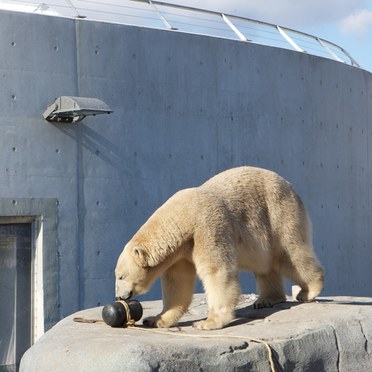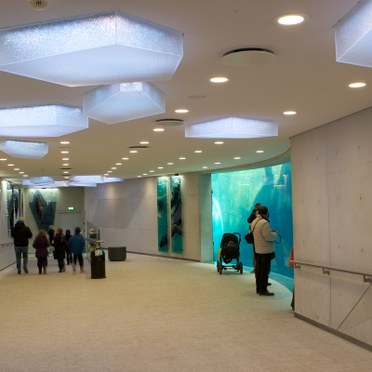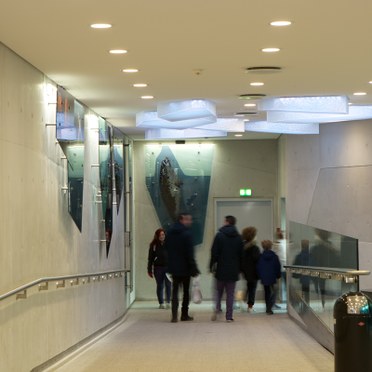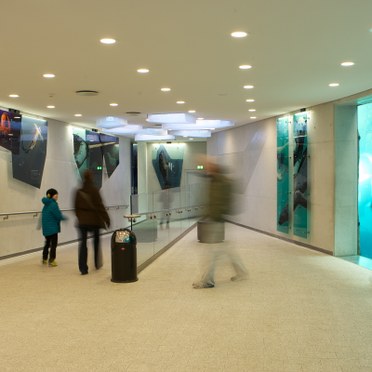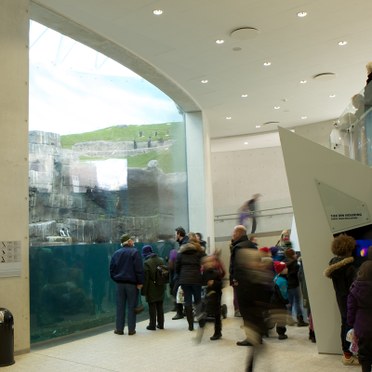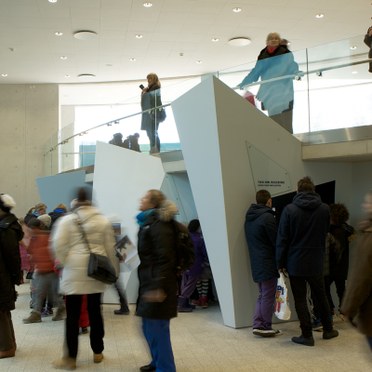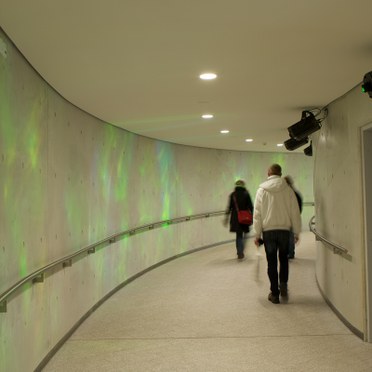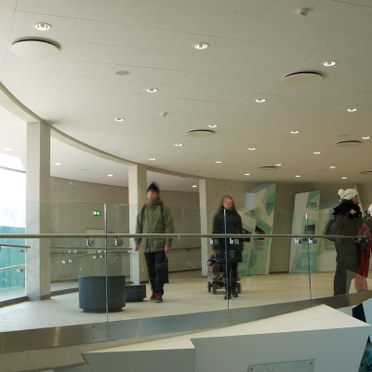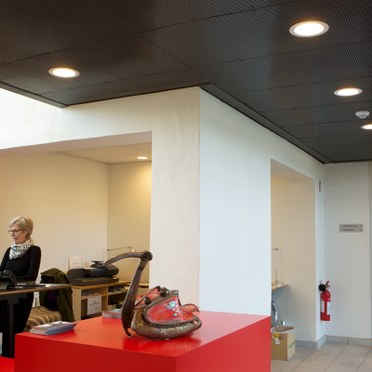Copenhagen Zoo, Denmark
- Lamp efficacy
Lamp efficacy
Ensuring the lamp efficiently converts electricity into light (lm/W).
- Ballast classification
Ballast classification
Controlling the electricity supply to the lamp (Energy Efficiency Index).
- Luminaire distribution
Luminaire distribution
Controlling light emission using optics which bend and shape the light to the correct location.
- System efficacy
System efficacy
The use of LED luminaires with passive cooling ensures optimal running conditions. This maximises the system efficacy of the luminaire, giving the high output light for low input power, whilst requiring no parasitic energy to operate cooling systems.
- Presence/absence detection
Presence/absence detection
Providing lighting only when it’s needed.
- Daylight detection
Daylight detection
The use of daylight switching ensures that exterior lighting is only active when natural light is insufficient, preventing energy usage during daylight times.
- Constant illuminance
Constant illuminance
Producing the correct lighting levels for the duration of the maintenance period.
- Task-scene setting
Task-scene setting
Allowing the user to set scenes and adapt the lighting to different tasks.
- Timed off
Timed off
Automatic cut-off to turn all lights off during unoccupied hours.
- Task lighting
Task lighting
Lighting task areas with the correct amount of light.
- Zoning of lighting
Zoning of lighting
Zoning lighting in accordance to occupancy patterns or window location.
- Maintenance schedule
Maintenance schedule
Tailoring maintenance schedules in accordance to product age, performance and environment.
- Waste light
Waste light
The use of luminaires providing tight optical control allows a lighting design sympathetic to the natural environment, minimising spill light which in turn ensures energy is only used to light the target area, reducing energy consumption.
- Reflectance
Reflectance
Taking advantage of light which is reflected from the surface within the space.
- Visible smart metering
Visible smart metering
Enabling results of actions to be quickly seen as increased or decreased energy use to encourage responsible energy consumption.
Thorn illluminates Copenhagen Zoo's biggest attraction
Founded in 1859, Copenhagen Zoo in Denmark is one of the oldest zoos in Europe. It comprises 27 acres and attracts more than a million visitors every year, making it one of Denmark's top attractions.
In February 2013, the zoo opened The Arctic Ring – a new and unique home for its polar bears, North Atlantic birds and seals. As well as offering the animals much better living conditions and space, the 3,200 sq m facility also allows visitors to get up close both above and below the water. Exceptional architecture combined with carfefully configured building design and lighting from Thorn provide an enchanting arctic experience which is unparalleled in Europe.
A journey to The Arctic Ring
Copenhagen Zoo's arctic journey begins in the polar bears' summer home. Vistors are led through a tunnel illuminated by Base LED downlights, which combine energy efficiency and longevity with true colour quality. Sounds of polar bears enrich the journey while posters offer the opportunity to learn about their life. Visitors then enter a submerged acrylic tunnel, allowing for a spectacular view of swimming polar bears.
In The Arctic Ring's impressive exhibition, penguins are ready to take over the entertainment. Visitors can also try to compete with the polar bear by holding their breath under the glow of Cruz LED – a high output recessed LED downlight with passive cooling, dimming and consistent colour performance.
In the outdoor polar bear cave, Troika floodlights provide illumination when daylight fades with excellent light control minimising obtrusive light for the surrounding environment. Finally, the neighbouring bird hill's rural environment is lit by the particularly robust and corrosion-proof fluorescent 7297D. This luminaire is suitable for harsh environments and resistant to bird droppings.
Michael Petersen, Manager of The Artic Ring exhibition says: "When visitors enter The Arctic Ring it is important that the transition from the bright daylight into the artificial light in the tunnel and exhibition is as pleasant as possible.
"In the exhibition we also value the LED lighting because of its ability to show colours correctly and long lifetime, which minimises the cost of renewing light sources."
Key facts
- Exhibition ground floor
- Luminaire: Cruz LED
- Lighting level: 300 lux
- Lamp efficacy: 59 lm/W
- Exhibition balcony
- Luminaire: Base LED
- Lighting level: 100 lux
- Lamp efficacy: 50 lm/W
Products
- Base LED
- Cruz LED
- 7297D
- Troika 400W
- Copenhagen Zoo Case Study
(PDF/
1 MB)
Download a PDF case study of this project.

